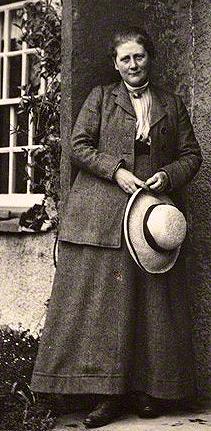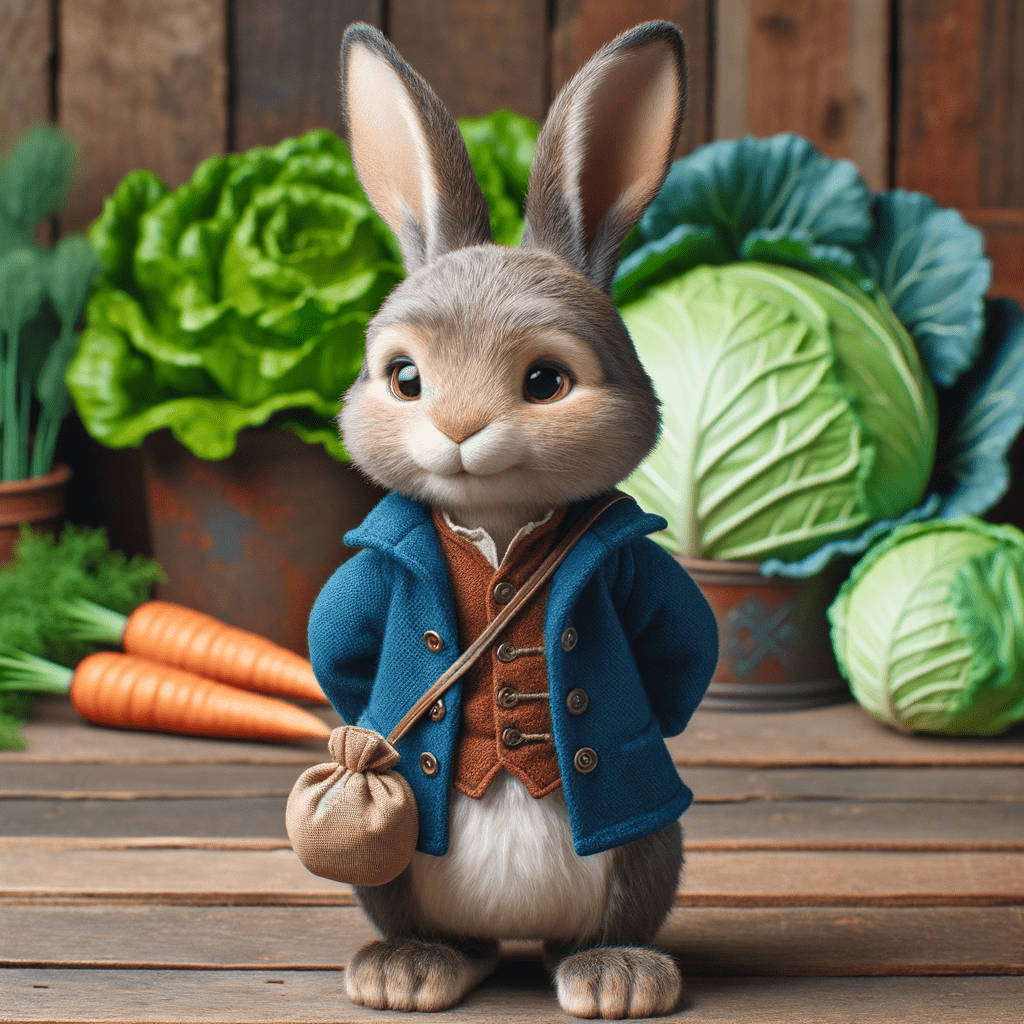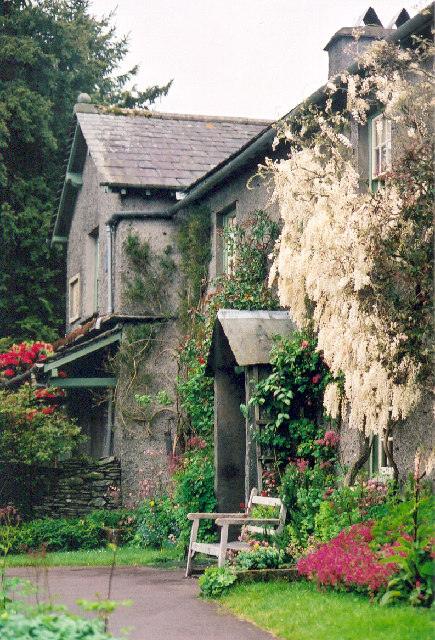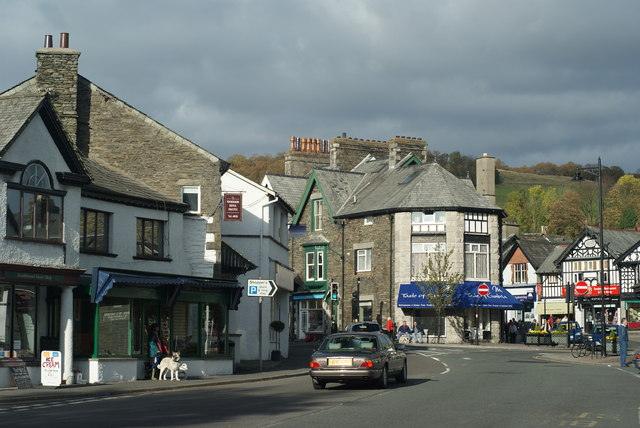Beatrix Potter, the beloved author and illustrator, is synonymous with enchanting tales of woodland creatures and pastoral life. Her stories, rich with imagination and charm, have captivated readers for over a century. Nestled in the picturesque landscape of Cumbria, Potter's legacy is deeply intertwined with the region's natural beauty and cultural heritage.
This article invites you to explore the enchanting world of Beatrix Potter, delving into the inspirations behind her work, the iconic locations that brought her stories to life, and the ongoing efforts to preserve her remarkable legacy for future generations.
Discovering Beatrix Potter: A Journey Through Cumbria’s Charm
Beatrix Potter was born in 1866 in London, but the serene landscapes of Cumbria captured her heart and inspired her creativity. With its rolling hills, shimmering lakes, and quaint villages, the Lake District provided the perfect backdrop for her enchanting tales.
Visitors to this region can embark on a journey through Potter's life, exploring the very places that influenced her storytelling. From the charming village of Near Sawrey to the tranquil shores of Lake Windermere, each location offers a glimpse into the world that shaped her imagination.

Potter's connection to Cumbria deepened when she purchased Hill Top Farm in 1905, a quaint farmhouse that became her sanctuary and creative haven. Today, Hill Top is preserved as a museum, showcasing her original illustrations, personal belongings, and the beautiful gardens that inspired her work.
Walking through the rooms of Hill Top, visitors can feel the spirit of Potter's creativity, as if she might return at any moment to continue her storytelling. The farm is a testament to her love for the land and the animals that inhabited it, making it a must-visit for fans of her work.
The charm of Cumbria extends beyond its landscapes; it is also reflected in the warmth of its communities. Residents take pride in their connection to Potter, often sharing stories and anecdotes about her life there. The annual Beatrix Potter Festival in Hawkeshead celebrates her legacy, featuring art exhibitions, storytelling sessions, and family-friendly activities that bring her characters to life.
This sense of community and shared history adds an extra layer of enchantment to any visit, allowing guests to immerse themselves in the world of Potter and her beloved tales. As you journey through Cumbria, you will discover that Beatrix Potter's legacy is not just about her stories but also the deep connection she fostered with the land and its inhabitants.
Her love for nature and wildlife resonates throughout the region, inspiring visitors to appreciate the beauty that surrounds them. This journey through Cumbria is a tribute to Potter's life and an invitation to embrace the charm and wonder of the natural world.
The Natural Inspirations Behind Potter’s Beloved Tales
Beatrix Potter's stories are imbued with the essence of the natural world, reflecting her keen observations of wildlife and the environment. Her love for nature began at a young age, as she spent countless hours exploring the countryside, sketching animals and plants.
This passion for the outdoors is evident in her tales, where characters like Peter Rabbit, Jemima Puddle-Duck, and Squirrel Nutkin come to life against the backdrop of the Lake District's stunning landscapes. Each story is a celebration of the beauty and intricacies of nature, encouraging readers to appreciate the world around them.

Potter's meticulous attention to detail is one of the hallmarks of her work. She often studied animals in their natural habitats, capturing their behaviours and characteristics with remarkable accuracy. This dedication to authenticity not only enriched her storytelling but also fostered a deep respect for the environment.
Her illustrations, filled with vibrant colours and intricate designs, invite readers to step into a world where nature reigns supreme. Through her art, Potter encourages a sense of wonder and curiosity about the natural world, inspiring generations to explore and protect it.
The themes of conservation and environmental stewardship are woven throughout Potter's narratives. She was a pioneer in advocating for the protection of the Lake District, recognising the importance of preserving its beauty for future generations.
Her commitment to conservation extended beyond her literary work; she actively participated in local initiatives to safeguard the landscape she cherished. Today, her legacy continues to inspire environmental awareness, reminding us of the vital connection between storytelling and the natural world.
As visitors traverse the landscapes that inspired Potter, they are reminded of the importance of nurturing our relationship with nature. The rolling hills, lush forests, and sparkling lakes serve as a backdrop for reflection and appreciation.
Potter's tales encourage us to observe the small wonders of the world, from the flutter of a butterfly to the rustle of leaves in the wind. In a fast-paced world, her stories serve as a gentle reminder to slow down, connect with nature, and find joy in the simple pleasures of life.
Exploring the Iconic Locations of Potter’s Storybook World
A visit to Cumbria is incomplete without exploring the iconic locations that inspired Beatrix Potter's beloved stories. One of the most significant sites is Hill Top Farm, where Potter wrote many of her tales. The farmhouse, with its charming gardens and rustic interiors, is a living museum that transports visitors back to the early 20th century.
Each room is filled with artefacts and illustrations that reflect her life and work, allowing guests to step into the pages of her stories. The surrounding gardens, brimming with flowers and vegetables, echo the pastoral scenes depicted in her illustrations.

Another must-visit location is the village of Near Sawrey, where Potter spent much of her time. The village is steeped in history and charm, with its narrow lanes and traditional stone cottages. Visitors can stroll through the village, taking in the sights and sounds that inspired Potter's characters.
Nearby, the picturesque Esthwaite Water offers opportunities for leisurely walks and boat rides, allowing guests to experience the serene beauty that captivated Potter's imagination. The tranquil waters and lush landscapes provide a perfect setting for reflection and inspiration.
The Beatrix Potter Gallery in Hawkshead is another highlight for fans of her work. Housed in a historic building, the gallery showcases a rotating collection of her original illustrations and manuscripts. The exhibits delve into
Potter's creative process, offering insights into her artistic journey and the evolution of her characters. The gallery also hosts workshops and events, inviting visitors to engage with Potter's legacy in a hands-on way. This immersive experience allows guests to connect with the stories on a deeper level, fostering a greater appreciation for her artistry.
As you explore these iconic locations, you will find that each site tells a story of its own, intertwined with Potter's life and work. The landscapes, villages, and landmarks serve as a testament to her enduring legacy, inviting visitors to immerse themselves in the magic of her world.
Whether wandering through the gardens of Hill Top or enjoying a boat ride on Esthwaite Water, each moment spent in Cumbria is a celebration of Beatrix Potter's enchanting tales and the natural beauty that inspired them.
Preserving Beatrix Potter’s Legacy for Future Generations
The legacy of Beatrix Potter is not only celebrated but also actively preserved through various initiatives aimed at honouring her contributions to literature and conservation. The National Trust, which manages Hill Top and other significant sites, plays a crucial role in maintaining the integrity of these locations.
Their efforts ensure that Potter's stories continue to resonate with visitors, providing educational programs and resources that highlight her impact on both literature and environmental conservation. By fostering a deeper understanding of her work, the National Trust helps to keep her legacy alive for future generations.
In addition to the preservation of physical sites, numerous organisations and local communities are dedicated to promoting Potter's values of nature conservation and wildlife protection. Educational programs in schools and community centres emphasise the importance of environmental stewardship, drawing inspiration from Potter's love for the natural world.
These initiatives encourage young people to engage with nature, fostering a sense of responsibility and care for the environment. By instilling these values in the next generation, Potter's legacy continues to inspire a commitment to conservation.
The annual Beatrix Potter Festival serves as a vibrant celebration of her life and work, bringing together locals and visitors alike. The festival features a variety of activities, including storytelling sessions, art exhibitions, and nature walks, all designed to engage the community and promote Potter's messages.
This event not only honours her legacy but also strengthens the bond between the local community and the natural environment. By celebrating her contributions, the festival ensures that her stories remain relevant and cherished.
As we reflect on Beatrix Potter's legacy, it becomes clear that her influence extends far beyond the pages of her books. Her commitment to nature, conservation, and storytelling continues to inspire individuals and communities alike.
By preserving her legacy, we honour her vision of a world where nature is celebrated and protected. As we explore the enchanting landscapes of Cumbria, we are reminded of the importance of nurturing our connection to the environment and passing on the values that Beatrix Potter so passionately championed.
Exploring Beatrix Potter's legacy in enchanting Cumbria is a journey that transcends time, inviting us to connect with the natural world and the stories that have shaped our understanding of it. From the idyllic landscapes that inspired her tales to the ongoing efforts to preserve her contributions, Potter's influence remains a guiding light for generations to come.
As we wander through the charming villages and serene lakes of Cumbria, we are reminded of the magic that lies in nature and the power of storytelling to inspire, educate, and unite us. Let us carry forward Beatrix Potter's legacy, embracing the beauty of the world around us and sharing her enchanting tales with future generations.
Beatrix Potter’s Legacy in Enchanting Cumbria FAQs
Who was Beatrix Potter?
Beatrix Potter was an English writer, illustrator, natural scientist, and conservationist best known for her children's books featuring animals, such as "The Tale of Peter Rabbit." She spent much of her life in the Lake District, Cumbria, where she was deeply involved in conservation efforts.
Why is Beatrix Potter associated with Cumbria?
Beatrix Potter purchased several farms and properties in the Lake District, Cumbria, to preserve the rural landscape. She lived at Hill Top, a farm in Near Sawrey, and many of her beloved characters and stories were inspired by the local countryside and its wildlife.
What is Hill Top, and can I visit it?
Hill Top is the 17th-century farmhouse that Beatrix Potter bought in 1905. It is located in Near Sawrey, Cumbria, and was her first property purchase in the area. Hill Top is now a museum managed by the National Trust and is open to the public, showcasing Potter’s personal belongings and her inspirations.
What other places in Cumbria are connected to Beatrix Potter?
In addition to Hill Top, visitors can explore the Beatrix Potter Gallery in Hawkshead, housed in a building once used by Potter’s husband, William Heelis, as his solicitor’s office. The gallery displays her original artwork. Yew Tree Farm, also owned by Potter, is another notable location, along with the Armitt Museum in Ambleside, which houses some of her personal collections and artworks.
How did Beatrix Potter contribute to conservation in Cumbria?
Beatrix Potter was a pioneering conservationist who used her earnings to purchase and preserve land in the Lake District. Upon her death, she left 14 farms, over 4,000 acres of land, and her extensive portfolio of properties to the National Trust, ensuring the preservation of the region’s natural beauty and traditional farming practices.
What should I know before visiting Hill Top?
Hill Top is a small, well-preserved farmhouse with many original items that belonged to Beatrix Potter. Due to its size, visitor numbers are limited, and entry is by timed ticket, which can be purchased in advance or on the day if available. It’s recommended to book early, especially during peak tourist season.



